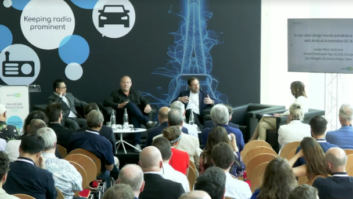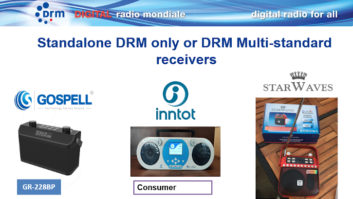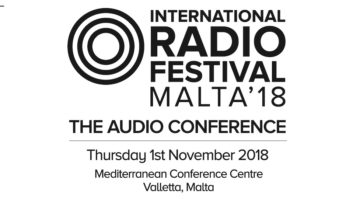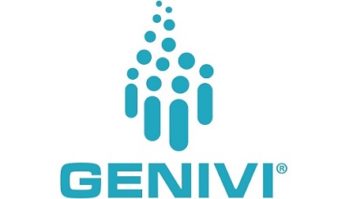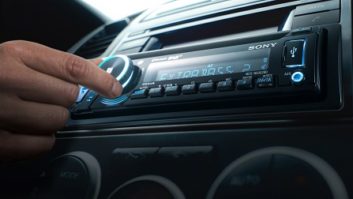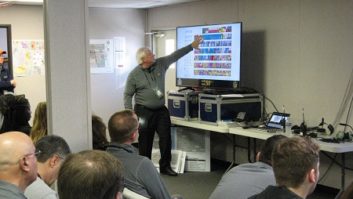In the United States, opinions of digital radio are influenced strongly by individual perceptions of iBiquity Digital’s HD Radio system. While many broadcasters are impatient with its adoption rate, others consider it a fairly young technology. HD Radio really only became available to broadcasters eight years ago. Its older cousin DAB isn’t yet 20.
Even over this relatively short period of time, we can learn a lot from the introduction of digital radio services in other parts of the world. Notable successes and stories of digital stagnation offer their lessons, which emerge from a comprehensive study of test reports, press releases and government data to give us a sense of the state of digital radio worldwide.
Veteran industry observer Richard Redmond felt that the time was ripe to conduct such a survey. The planners of the NAB’s 2012 Broadcast Engineering Conference agreed, believing that Redmond’s international experience — as vice president of product management and strategy for the Transmission Systems group of broadcast equipment manufacturer Harris Corp. — would provide a unique perspective on the realities of launching new broadcast technologies in different regions. Redmond presented the results of his research at the NAB Show in Las Vegas in April.

The status of digital radio technologies is shown in this map created by Harris. Beginning his survey in the Americas, Redmond finds some success in the introduction of HD Radio in the U.S. and its eventual selection as the digital radio standard for both FM and AM broadcasts. Since the rollout began in 2004, more than 2,000 stations — mostly FMs — are on the air with IBOC, reaching 249 million potential listeners. More than 1,300 multicast stations are being broadcast. By the international measures of digital radio adoption, he says these are good numbers in that time frame.
Canada, known in the 1990s as a strong proponent of Eureka-147, began winding down its L-band DAB network beginning in 2010 due to a lack of compelling unique programming and affordable receivers. Trials of HD Radio have been underway since 2006 but a national rollout of IBOC hasn’t been planned.
“I wouldn’t say it’s a full-scale adoption,” Redmond said, but he predicts that Canada will eventually move to HD Radio due to significant economic advantages to be realized by aligning with the larger U.S. consumer electronics market.
South of the border, Redmond sees a clearer picture. “After a number of trials and tests, HD Radio has been adopted” in Mexico last year, and he reports that approximately 20 stations are on the air or under construction in some of the largest cities.
In Brazil, HD trials have been underway since 2005 and now involve about 25 stations. The Communications Ministry is set to endorse a national standard formally later this year, but recent interest in DRM30 for AM stations has led to consideration of that system as well. Because of this, Redmond believes, “there may possibly be multiple standards for Brazil.”
CENTRAL AMERICA
Smaller hubs of digital radio activity ring the Caribbean, with Puerto Rico, Panama, the Dominican Republic and Jamaica having authorized HD Radio. Colombia is conducting trials. The rest of Latin America is “still in the preliminary or trial phases” of digital radio adoption, according to Redmond.
Although there are a few broadcasters in the Americas operating shortwave services on DRM30, Redmond says HD Radio has a clear advantage in the region. He attributes this to similarities in regulatory and structural conditions that led to a system where individual broadcasters manage both their own transmission systems and programming, instead of large broadcast system operators leasing capacity on their network to independent program providers as is common elsewhere.
Three Digital Radio Technologies Three main technologies are in use in various countries for terrestrial digital radio services. They share some aspects, such as the use of Coded Orthogonal Frequency-Division Multiplexing modulation techniques for reliable mobile reception and (in current incarnations) the use of high-efficiency audio codecs based on the MPEG HE-AAC format, but each also has unique characteristics driven primarily by spectrum and regulatory constraints.
HD Radio, developed by iBiquity Corp. and its precursors USA Digital Radio and Lucent Digital Radio, is designed to work within the FM band without requiring additional spectrum allocations. Digital sidebands are broadcast within the authorized spectrum mask of a 200-MHz channel alongside an analog FM signal, enabling backward compatibility with analog receivers while offering multichannel audio and robust data services in the digital portion of the signal. A variant of the system designed for AM broadcasting on MW bands offers similar backwards compatibility and spectrum efficiency advantages for a single digital audio service, adding additional digital carriers underneath the AM carrier to deliver roughly half of the FM system’s data throughput within a much smaller 30 kHz occupied bandwidth.
The “DAB Family” of systems includes the original DAB, DAB+ and DMB variants. Designed for deployment on VHF Band III (174–216 MHz, occupied by TV Channels 7–13 in the U.S.) or L-Band frequencies (1450–1500 MHz) for terrestrial use, all three systems package several individual services into a single 1.5-MHz “ensemble,” or multiplex. DAB, also known as Eureka-147, uses MPEG-1 Layer 2 audio coding, DAB+ uses more efficient HE-AAC coding, and DMB supports AVC (MPEG-4) mobile video in addition to audio services.
Digital Radio Mondiale was originally developed to revitalize transmitting bands under 30 MHz, which are particularly challenged by susceptibility to environmental noise, fading, narrow channel bandwidth, and skywave interference from distant stations. This system, now called DRM30, operates on SW and MW bands in standard 9- or 10 kHz channels or in wider 18 or 20 kHz allocations for increased data rate or robustness. A newer variant of the system called DRM+ offers a significantly higher data rate on 100-kHz VHF channels, enabling multicast audio, data services and a “simulcast” mode to support migration from analog to digital in the FM band.
— Daniel Mansergh In the Asia Pacific region, Redmond finds an example of a digital rollout that others would do well to follow. “If one country, in my opinion, got it right,” he observes, “it would be Australia.” The introduction of DAB+ just a few years ago has been a great success, with full-power systems built out in five cities covering 60 percent of the population and attracting more than 1 million weekly listeners.
Critical to the rate of adoption, Redmond believes, is the “significant number of receivers” available to consumers, with more than 100 models offered through 800 local retailers and online. More than 600,000 receivers had been sold through September 2011, he says.
But perhaps an even more important factor in the success of the Australian digital radio launch was the cooperation and commitment of all the parties involved.
“There was a concerted effort to provide a unified service” on the part of government regulators and both public service and commercial broadcasters, Redmond said. All aspects of the new service, including spectrum policy, transmission system design, the creation of digital-only programming, receiver availability and the marketing and public relations strategy were coordinated among the stakeholders.
In mainland China DAB, DRM and HD Radio technologies are all in play, although in Redmond’s estimation “DAB is the most dominant.” Chinese regulators approved the technology in 2006 and DAB/DMB services are now on the air in 11 cities, with a push to include receivers in cellphones and launch innovative new services. In Beijing, the largest local broadcaster has launched a DAB-based service called “Push Radio” that enables receivers to download audio from 25 program channels for later on-demand listening.
Although it has been in use on short- and medium-wave broadcasts in China for the past 10 years, Redmond said that the DRM system has struggled to win consumer adoption due to limited receiver choices and availability. Recently iBiquity has entered the fray, partnering with a Chinese technology firm to commercialize a China-specific digital radio system following HD Radio trials in 2008 and 2009.
Elsewhere in Asia, DAB systems are in use in Hong Kong, Indonesia, Malaysia and Laos; HD Radio is on the air in the Philippines, Thailand and Bangladesh.
DRM30
DRM30 is deployed on shortwave stations throughout the region, including Malaysia, Thailand and India. Government broadcaster All India Radio has broadened its commitment to DRM by announcing plans to add new shortwave transmitters and to replace all analog medium-wave transmitters with digital units. In Redmond’s view, India represents “one of the largest potential areas for DRM deployment” in the world.
Redmond noted the breakout success that one Asian country has experienced with digital broadcasting.
“South Korea is the largest deployment of DMB in the world,” he said, highlighting the 27 million receivers purchased by Korean consumers. Most of these are used to receive mobile TV broadcasts, but the importance of these devices to the overall viability of the technology cannot be overstated. Redmond observes that “the DAB family of standards has the widest availability of cost-effective receivers” due in large part to the South Korean market.
More than 20 years ago, European engineers began developing a digital replacement for analog radio systems, so it’s not surprising that some of the biggest successes have come from this region.
The United Kingdom is the poster child for digital success. Britain’s DAB network “has been held out as the largest and leading deployment of digital radio” in the world, according to Redmond. But even there, significant obstacles needed to be overcome to get to this point.
Technological progress has alleviated many of the downsides of early DAB receivers, allowing part count, circuit complexity, weight, power requirements and cost all to decrease. Even “car radios are now becoming more available,” notes Redmond.
But by far the most significant factor in Britain’s digital success was the steadfast commitment of the BBC to DAB and introduction of digital-only services such as Radio 7 that drove consumer demand for receivers. Adoption has been so strong that British regulators are now considering an analog sunset date.
Another early proponent of DAB has had to rethink its strategy after tepid consumer adoption of the previous digital service. With the national re-launch of DAB+ last year, both public and commercial broadcasters in Germany have been driving the move to digital, Redmond said. They have formed a unique public-private partnership with government financing to fund the construction of a national multiplex with enough capacity to serve both public and commercial broadcasters. Additional support from the government in the form of a digital receiver requirement in the latest Telecommunications Law is being drafted.
Individual countries’ response to the costs of digital migration can vary widely. In France, although the DMB standard had been approved and launch plans were in place, a digital rollout has been “delayed due to the economic crisis,” Redmond says. Now that a formal report outlining the causes of the delay has been completed, a new series of digital trials have been planned with the intent to jumpstart the migration process.
However, a daily newspaper reported in July the new French government believes digital radio is too expensive and may decide not to preempt digital radio frequencies for public broadcaster Radio France. French media awaited official word from the government.
Norway, on the other hand, was one of the first countries to deploy DAB, and has now set a firm analog switch-off date in 2017 provided certain coverage thresholds have been met. The reason for the aggressive timeline comes down to Euros and cents. As Redmond puts it, “the digital future is significantly less expensive to operate, especially with shared transmission.”
Denmark is another success story, boasting the “highest number of DAB users per capita in the world,” according to Redmond, while Switzerland counters with claims of “the best coverage in Europe.” Both countries are considering an analog sunset, with Switzerland already migrating its nationwide AM network to DAB with significant operating cost reductions in power alone.
DAB services are also deployed in the Netherlands, the Czech Republic, Hungary, Poland, Belgium, Spain and Sweden. HD Radio trials have been conducted in Switzerland, Bosnia, Ukraine, Poland and Romania.
The Russian Federation has announced plans to convert all analog long-, short- and medium-wave broadcasts to DRM30, Redmond notes, and DRM shortwave broadcasts are regularly scheduled in the larger regions of Europe, Africa and the Middle East.
In summary, Redmond sees significant growth in digital broadcasting in the 20 years of its existence. Internationally, “the DAB family of standards is in a leadership position,” he said; HD Radio is particularly strong in the Americas, and DRM is gaining support in BRIC countries Brazil, India and Russia. In his opinion, adoption rates for digital radio worldwide will continue to be modest unless government mandates are enacted to spur the transition
Even this proponent of digital technology recognizes that it will take a lot more time to realize a completely digital future. Although millions of listeners can now enjoy the benefits of digital radio, Redmond cautions, “We can’t forget that the majority of listeners around the globe are analog.”






